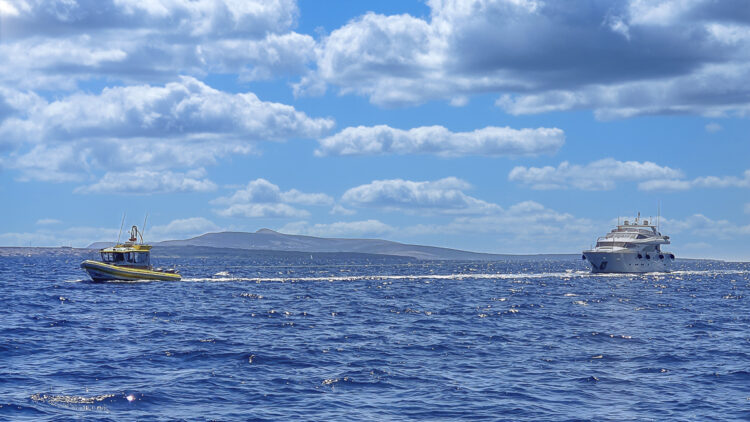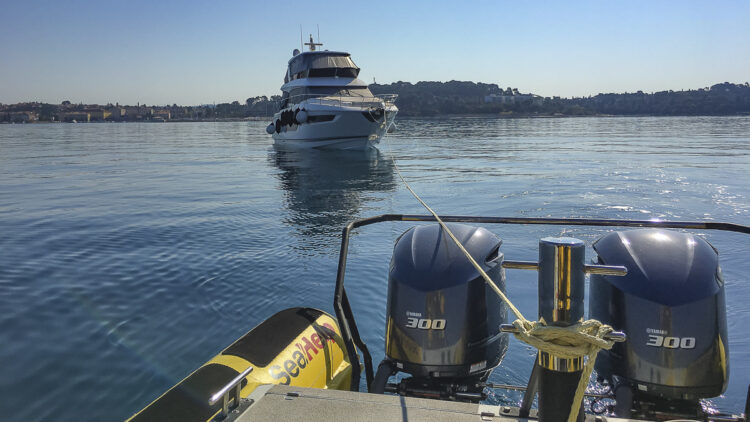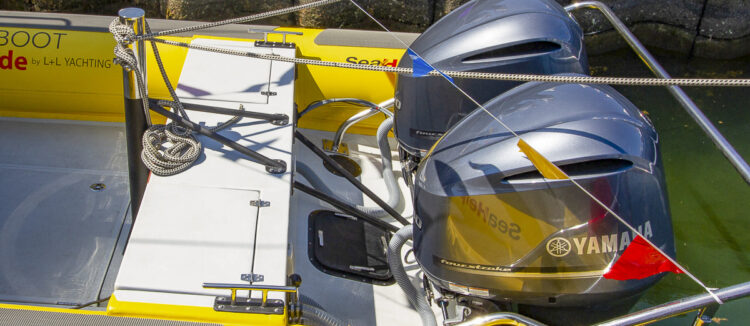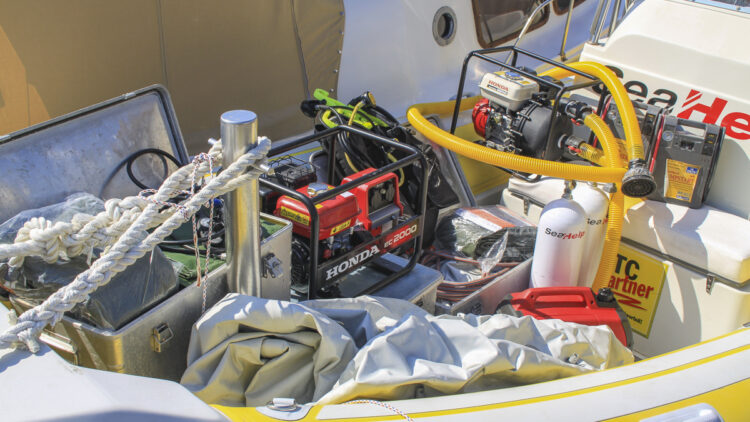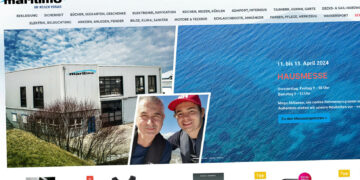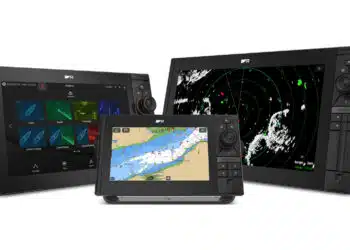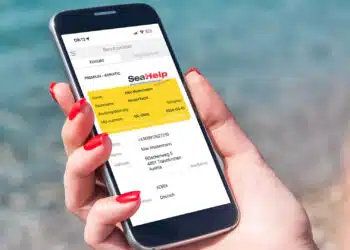Towing unmaneuverable ships, boats and yachts is part of the daily business of the nautical breakdown service SeaHelp and is the numerous free services of a SeaHelp membership integrated because technical problems can be solved much better and easier in a marina than on the high seas. Even if the SeaHelp response boats are already well equipped to provide “first aid” to damaged boats and yachts, sometimes a tow to the nearest marina to a specialist workshop seems unavoidable.
When towing boats, especially when the towing operation is carried out by inexperienced skippers, many dangers and pitfalls lurk, both legal and technical, so this article will first deal with the proper towing of boats and yachts, before answering legal questions in the second part on the subject of “boats and yachts properly towing”.
Tips and basics for the correct towing of boats, ships, yachts
So that no wrong tonality arises in the first place: Of course, it is part of good seamanship that skippers help each other, that is, in emergencies to hand the rope to damaged water sports enthusiasts to help. These tips and basics for a proper, safe towing operation come from SeaHelp professionals who deal with it every day and practice such towing operations of boats again and again, so that no unnecessary damage occurs to the towing boat as well as to the towed boat.
How to position the ship to be towed?
If a dangerous situation arises at sea that requires boats and yachts to be towed, the first question that arises is: how does the person helping position his boat correctly? In narrow marinas, it is much easier to maneuver a towing convoy in which the towing party is moored alongside the vessel to be towed than when towing with a towline. However, in strong swells, you should always avoid towing alongside, depending on local conditions.
The classic tow as an “attachment”
If one tows classically, i.e., with the towed as an “appendix,” one should use a crow foot should be used to distribute the force to two attachment points instead of one. This logically halves the force that would otherwise be applied to a single fixed point and conserves the cleats, which is likely to be particularly useful in heavy seas or heavy averages that need to be towed. For sailboats, however, it may make sense to use a yardpost instead of the normal attachment to the backstag to distribute the force evenly between port and starboard.
Fixing the towline properly
To take the line, the towing party passes the damaged vessel in leeward and has it thrown to him. The average first looks for a safe hold for the towline, but only occupies the fixed point on board with a round turn, in order to be able to exhaust the possibility of freeing the line a little when starting the tow, in order to avoid or reduce a jerky load on the fixed point as far as possible.
Length of the towline is crucial
In general, the line should be at least four times as long as the vessel that needs to be towed. Optimally, although not always possible, the line should have enough slack to still touch the water surface in the middle. If, due to lack of length, such a thing cannot be guaranteed, a so-called “rider weight” in the middle of the towline also helps to create the necessary damping.
Attention to correct towing speed
A mistake that happens from time to time: when towing, you would like to show the average person what your own boat is capable of and quickly overestimate the theoretical hull speed of the average person. If you take half the boat length of the ship to be towed in knots, you are always on the safe side, even if it should feel much faster.
Special case: towing after grounding
A special case is the so-called free towing after grounding, because here from the beginning significantly more force must be applied to make the average again afloat than is necessary in deep water.
You should be aware: Not only the resistance of the water, but also the frictional effect of the seabed, on which the damaged ship is stuck, must be overcome.
The logical consequence: The acting force should be distributed even significantly better to various fixed points on board the basic seat to avoid damage to cleats, etc.. For this purpose, the cock pot already mentioned at the beginning is also suitable here.
The same applies, of course, to the towing ship. Even if it is sometimes hectic in such cases, the meticulous preparation of such a tow ultimately ensures success and protects the valuable material.
Longitudinal towing ensures safety in marinas
As another variant of towing a ship, you can choose longitudinal towing in marinas or narrow fairways, for example. Important: The towing vessel always picks up the vessel to be towed on the side to which the propeller of the towing vessel turns, which in most cases is probably the port side. Fenders as thick as possible should protect both vessels from damage, but be careful: many fenders have steel eyelets in the upper area that are only covered on one side. A circumstance that can be quickly overlooked in the rush, however, and lead to damage to the gelcoat of the hull.
Longitudinal towing: create a firm connection
The stern of the towing boat should remain clear to maintain the maneuverability of the tow. It is advantageous if the lines are tensioned so that the towing unit presents itself as a compact unit. The fore line, fore spring, aft line and aft spring must create as tight a connection as possible, depending on the conditions that present themselves.
For towing, it is better to call the professionals from SeaHelp Breakdown Service right away
However, for those who ultimately find this too costly or who have concerns about mastering such an unfamiliar situation on the first try without causing unnecessary damage, there is still a call to the SeaHelp HelpLine. In an average of 20 minutes, SeaHelp’s towing professionals are on the scene and, with their many years of experience, quickly have the situation under control.
Depending on the size of the operational boat, the Yellow Angels of the Adriatic can safely tow yachts weighing up to 100 tons (up to approx. 35 meters yacht length). To put it precisely: A small rescue boat with 2 x 150 hp Yamaha engines can tow yachts up to 30 tons dead weight (up to approx. 20m yacht length), the Technomarine rescue boats with 2 x 600 hp, which are mainly in use, are able to take yachts up to 100 tons (up to approx. 35m yacht length) in tow.
Special equipment on SeaHelp rescue boats: Up to 100 tons no problem!
Unlike conventional boats and yachts, the SeaHelp rescue boats have special towing bollards that are laminated in GRP all the way down to the keel and are additionally supported on the transom plate in the stern, against which the 600 hp of the two Yamaha outboards press. The special device provides appropriate protection for the tug, which hardly any private boat or yacht can offer in this form.
Another advantage of using the SeaHelp service “Towing”:When towing by SeaHelp, the towed is insured through SeaHelp against any damage caused by the towing.
Caution: engine may overheat during towing
But another aspect, which often does not immediately appear, should not be ignored: Who lacks the necessary feeling and experience when towing, tends to overheat the engine in the hectic. Even if such damage does not show immediately, long-term damage is not excluded.
Risk assessment towing: from private or rather from a professional?
The duty to render assistance when life and limb are in danger exists at sea in any case. But in many cases, there is no need for immediate intervention; a time delay of less than half an hour until the SeaHelp response boat arrives often seems tolerable. And with careful consideration of the risk, it probably makes more sense in most cases of an accident at sea to call SeaHelp’s towing professionals and thus avoid unnecessary risk.
Fast towing assistance thanks to SeaHelp app
With just two clicks on the free SeaHelp app for iOS (Apple) and Android (e.g. Samsung, Xiaomi, Oppo, Huawei, Sony, LG, etc. ) operating system, which, by the way, brings significant advantages for all skippers, whether SeaHelp members or non-members, one is already in the SeaHelp headquarters, has already transmitted his location automatically and receives after telephone feedback by the headquarters on request quick help. For SeaHelp members, towing operations to the nearest safe port are even free of charge. One more reason why a membership in Europe’s largest nautical breakdown service is worthwhile in any case, to go safely and reassured on the next trip.
Part 2 follows: Legal aspects of towing ships, boats, yachts
By the way: We will dedicate one of our next articles to the legal aspects involved in towing ships, boats and yachts.


